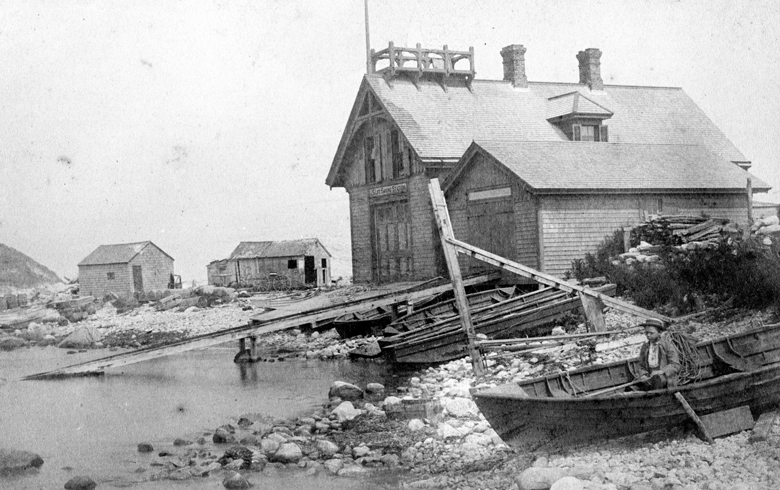Whether it is for work or play, anyone spending significant time on a boat knows that help is a radio call away, and that other beacons and signals can be relied upon to alert to the need for help. But how would that work if there was no one designated to monitor for signs of distress?
This was indeed the reality in mid-19th century Maine at the height of maritime commerce and coastal travel. Foul weather or navigational errors coupled with Maine’s rocky coast lines could easily result in disaster and loss of life. A wooden vessel run aground without timely assistance was sure to be destroyed by the crashing surf knocking it against the rocks with those on board unlikely to survive a swim for help in rough and frigid waters.
Nationally, the Life-Saving Service was responsible for saving over 175,000 lives from 1878-1915.
The need for coastal first responders tasked with the rescue of fishermen, sailors, and passengers close to shore was apparent. Beginning in 1848, the federal government began to dedicate funds for buildings, boats, and equipment for such rescue efforts.
Unfortunately, the geographic scope was limited with approaches to the ports of Boston and New York being the initial focus.
Additionally, there was no system for training or equipment monitoring in place and stations were sparsely manned by volunteers.
Efforts began in 1871 to expand and professionalize national life-saving practices resulting in the establishment of The United States Life-Saving Service in 1878. Along with the Revenue Cutter Service, Life-Saving Service became part of the Coast Guard in 1915 and was later joined by the Light-House Service.
Maine was home to seven life-saving stations by the end of the 1870s, each with a keeper and a crew of surfmen experienced in boat-handling who had met established physical requirements. The crews spent their days running drills, testing equipment, and monitoring the shoreline for those in need of their services.
They performed rescues either by rowing out to a vessel in distress or by securing a line to the vessel where people could travel along the line safely to shore. Nationally, the Life-Saving Service was responsible for saving over 175,000 lives from 1878-1915.
The station pictured here is identified as the Cranberry Isles Life-Saving Station in about 1885. Several watercraft and a launching ramp for surfboats can be seen along with a roof-top platform to lookout for vessels in need of assistance.
This station has been out of service since 1946 but the building is still in existence on Little Cranberry Island. It has undergone significant alterations and expansions since it was first built in 1879. Only the gable end of the original roofline is recognizable on the present-day structure.
Many such stations in Maine are private property and have been converted to residences. In fact, this spot is a currently a vacation rental.
Kelly Page is collections and library services manager for Maine Maritime Museum in Bath. Among the exhibits the museum is featuring this summer are “Zach Horn: Looking for Winslow Homer” and “Uncharted: Maine Artists | Maine Waters.” Explore resources and plan your visit at www.MaineMaritimeMuseum.org.





